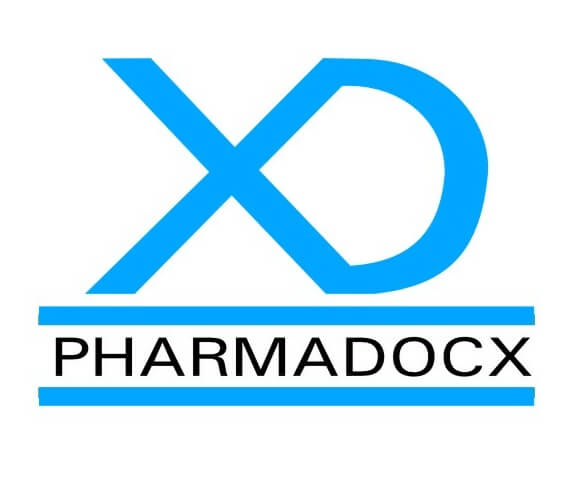Planning to market your medical device in the US? Then, you will have to secure the US FDA 510(k) approval. For which you will require proper documentation and have to select the appropriate predicate device. You will need the predicate device to prove substantial equivalence. Thus, the predicate device has a crucial role in securing the US FDA 510(k) approval. However, identifying the appropriate predicate device can be tricky. In this blog, we have provided some tips on how to identify a predicate device.
How to identify a predicate device?
Identifying the correct predicate device is the first critical step in US FDA 510(k) approval. The FDA authorities evaluate whether your device is substantially equivalent to the predicate device you have mentioned in the application. If it is equivalent, then your medical device will be cleared for sale in US. Thus, the predicate device has a vital role in launching a new medical device in the US market.
What is a predicate device?
A “predicate device” is a medical device that is currently being legally marketed in the US. These devices have previously received US FDA 510(k) approval. Furthermore, these predicate devices can be used as a reference point for new medical devices seeking US FDA 510(k) approval. The manufacturer of the new device is required to prove the new device is at least as safe and effective as the predicate device with respect to intended use and technological characteristics. Hence, it is important to correctly identify a predicate device for US FDA 510(k) application. Notably, the predicate device does not need to be identical to the new device. It simply needs to be used to provide evidence regarding the reliability and safety of the new medical device.
Factors to consider when selecting the predicate device
- Intended use of the medical device: The broad intended use of the predicate device should be similar to that of the new device.
- Device technological characteristics: The technological characteristics of the predicate device should be similar to that of the new device in question. For example, the design, materials used, and the method of operation of both the devices should be similar.
- Predicate device should be equipped with latest technology: Although technologically similar, the predicate device’s technology should not be outdated. The predicate device should be equipped with the latest medical technology.
- Device biocompatibility: The device biocompatibility also needs to be comparable. Furthermore, the biocompatibility assessments of a medical device or its components should not be limited to the raw materials used in the device. The manufacturing process and additional chemicals should also be taken into consideration.
The need to correctly identify a predicate device
The predicate device has a crucial role in successful 510(k) approval. The manufacturer is required to provide convincing evidence that the new device is substantially equivalent to the predicate device. Although both devices need not be identical, the new device should be at least as safe and effective as the predicate device. Hence, it is crucial to correctly identify a predicate device. If you choose an incorrect predicate device, the FDA may reject the application. Thus, manufacturers should cautiously identify a predicate device. When selecting a predicate device for 510(k) submission, the manufacturers should keep in mind whether they will be able to provide sufficient evidence to prove substantial equivalence.
The predicate device plays a vital role in determining whether a new medical device can be approved for the US market via the 510(k) pathway. Hence, choosing an inappropriate predicate device could result in a more expensive and time-consuming FDA 510(k) approval process. Moreover, if the predicate device is not suitable for the new device, it could result in delays and additional expenses. Hence, selecting the appropriate predicate device can help reduce the cost and time required to launch a new medical device in the market.
How to select the appropriate predicate device for FDA 510(k) submission?
- Identify a predicate device that has an intended use similar to that of the new device in question. For example, if your device is used to measure blood glucose levels, then try choosing a blood glucose measurement device as your predicate.
- Try to select a predicate device that has been approved recently. This is because the medical device sector undergoes rapid technological advancements. A recently approved device will be equipped with the latest technologies. Hence, try to identify a predicate that the FDA has recently approved.
- Choose a predicate device that aligns with the manufacturing process of your device. Additionally, the raw material used for construction and supplementary chemicals used in your device should align with the predicate device.
- Select a predicate device with technical characteristics similar to those of the new device in question. The characteristics, such as design, materials, labelling, and operational methods, should be taken into consideration.
Searching for predicate devices and zeroing in on the most appropriate device can be a tough task. Furthermore, demonstrating substantial equivalence is a complex and time-consuming process. Seeking the support of an US FDA 510(k) consultant can make the process easy for you. Pharmadocx Consultants specialize in US FDA 510(k) submission. We have extensive expertise in US FDA 510(k) application, document preparation, and predicate device selection. Feel free to get in touch with us, for predicate device selection support.
Where will I search for the predicate device?
This is the most common question every medical device manufacturer asks whenever they have to identify a predicate device. Well, the answer is simple.
After approving a new medical device, the FDA uploads the device 510(k) number along with the details to the 510(k) database. A three-letter product code is assigned to each device classification. The FDA database contains all the medical devices that have been cleared through the 510(k) process. After receiving the three-letter code, you can use it to find product details, manufacturing company, and even trade name of competitors. Then, you can identify a suitable predicate device, by analysing and comparing devices in the database.
Tips on how to identify a predicate device
The first and most crucial step of the FDA 510(k) submission process is choosing the appropriate predicate device. Choosing the appropriate predicate device can be tricky, especially given its importance in the approval process. It is vital to wisely select the predicate device. We have provided some tips that will come handy in the process.
- Try to search for a predicate that is similar to your device with respect to intended use, performance, design, technological characteristics, safety, and effectiveness.
- Try to avoid devices using outdated technologies.
- Choose the most recently approved predicate device, as it will be equipped with the latest technology.
- The FDA 510(k) databases is the best place to find a list of 510(k) cleared medical devices. Moreover, this database is updated frequently. Hence, it will be helpful to find a suitable recently approved medical device.
- Thoroughly search the FDA database for manufacturers who make similar medical devices.
- It is best to identify more than one predicate device. This might be helpful to demonstrate substantial equivalence, if required.
The Pharmadocx Consultants team will help identify a predicate device for US FDA 510(k) submission
Selecting a predicate device appropriate for your new medical device can be a cumbersome task. Owing to the importance of the predicate device in the FDA 510(k) submission, it is vital to choose the predicate appropriately. We are a reputed US FDA 510(k) consultant. Our team will help you identify a predicate device for US FDA 510(k) submission. Furthermore, as an US FDA 510(k) consultant, we provide comprehensive FDA 510(k) submission service. In addition to selecting the appropriate predicate device, we will prepare a strong case to prove substantial equivalence with the predicate. Additionally, we will help prepare the necessary supporting documentation. Also, we will respond to FDA queries on your behalf. To avail our all-encompassing US FDA 510(k) consultant service, drop an email at [email protected] or call/Whatsapp on 9996859227.





